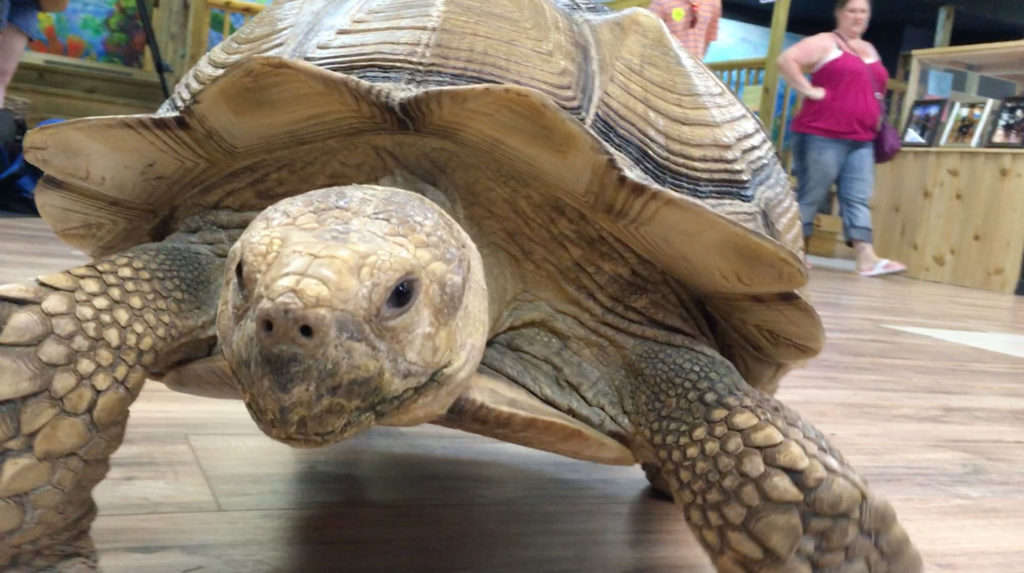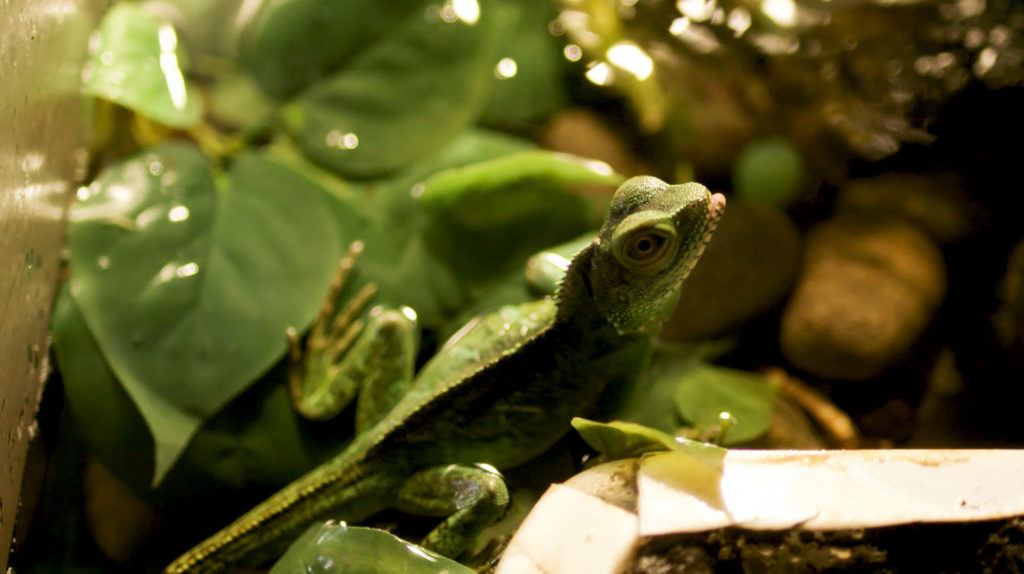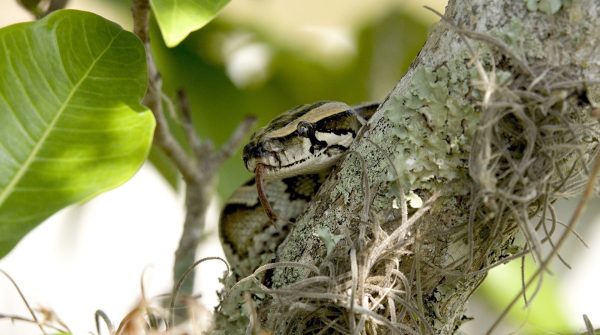Conservation
Conservation is a major part of the Alligator & Wildlife Discovery Center’s mission. Wildlife plays an important role in the health and balance of Florida’s environment. Our goal is to educate residents and visitors about the abundant reptile and aquatic wildlife found in Florida to ensure their survival for future generations.
Conservation has become increasingly important as human activity and global warming negatively impact the habitats of these majestic species. Fewer natural habitats remain each year. The habitats that do remain are degraded and bear little resemblance to the wild areas that existed in the past. Habitat loss due to destruction, fragmentation and degradation of habitat is the primary threat to the survival of wildlife.
Endangered species live in danger of becoming extinct because of low or falling populations, or because they are threatened by environmental stress.
Major Dangers to Wildlife

Climate Change
Global warming is making hot days hotter, rainfall and flooding heavier, hurricanes stronger and droughts more severe. It causes dangerous changes to the landscape of Florida, adding stress to wildlife species and their habitat. Since many types of plants and animals have specific habitat requirements, climate change could cause disastrous loss of wildlife species. Changes in average rainfall translate into large seasonal changes. Hibernating mammals, reptiles, amphibians and insects are harmed and disturbed. Plants and wildlife are sensitive to moisture change so, they will be harmed by any change in moisture level. Natural phenomena like floods, earthquakes, volcanoes, lightning, and forest fires.

Unregulated Hunting and Poaching
Unregulated hunting and poaching is a major threat to wildlife.

Pollution
Pollutants released into the environment are ingested by a wide variety of organisms. Pesticides and toxic chemical being widely used, making the environment toxic to certain plants, insects, and rodents. These toxins are then ingested by topline predators like alligators.

Deforestation

Population
Alligator & Wildlife Discovery Center Species Status
Least Concern (LC) is a conservation status assigned by the International Union for the Conservation of Nature (IUCN) to species or lower taxa that have been evaluated but do not qualify for any other category. Many common species, such as the giraffe, american alligator, golden eagle, red fox, plains zebra and humans areassigned to the least concern category.
Vulnerable (VU) is a conservation status assigned by the International Union for the Conservation of Nature (IUCN) to species or lower taxa that are likely to become endangered unless the circumstance threatening its survival and reproduction improve.
Vulnerability is mainly caused by habitat loss or destruction and vulnerable species are closely monitored.
Near Threatened (NT) is a conservation status assigned by the International Union for the Conservation of Nature (IUCN) to species or lower taxa that maybe considered threatened with extinction in the near future, although it doesn’t currently qualify for the threatened status. The IUCN note the importance of re-evaluating near threatened taxa often or at appropriate intervals.
Critically endangered (CR) – A critically endangered species is one that has been categorized by the International Union for Conservation of Nature (IUCN) as facing an extremely high risk of extinction in the wild.
Endangered (EN) – Endangered species is a species that is very likely to become extinct in the near future, either worldwide or in a particular political jurisdiction.

Crocodilians
American Alligator (Alligator mississippienis) LC
Nile Crocodile (LC)
Spectaled Caiman (LC)
Cuvier’s Dwarf Caiman (LC)
Saltwater crocodile (LC)

Tortioses / Turtles
African Sulcata Tortoise (Centrochelys sulcate) VU
Northern Map Turtle (Graptemys geographica) LC
Musk Turtle (Sternotherus odoratus) LC
Yellow Bellied Sliders (LC)
Red Eared Sliders (LC)
African Helmeted Turtle (LC)
Red Foot Tortoise (VU)
Elongated Tortoise (EN)
Common snapper (LC)

Amphibians
Kassina (Kassina maculata) LC
Fire-bellied Toad (Bombina orientalis) LC
Banded Bull Frog (Kaloula pulchra) LC
Pacman Frog (Ceratophrys cranwell) LC
Green Tree Frog (Hyla cinerea) LC
African Clawed Frog (LC)
White’s Tree Frog (LC)
Pacman Frog (NT)
Reed Frog (LC)
Poison Dart Frogs (LC)

Lizards
Bearded Dragon (Pagona barbata) LC
Leopard Gecko (Eublepharis macularius) LC
Crested Gecko (Rhacodactylus ciliatus) VU
Argentinian Black and White Tegu (Salvator merianae) LC
Argentinian Red Tegu (LC)
Blue Iguana (Cyclura lewisi) NT
Uromastyx (Uromastyx aegyptia) NT
Veiled Chameleon (Chamaeleo calyptratus) LC
Cuban Knight Anole (Anolis equestris) LC
Common Basilisk (Basiliscus basiliscus) LC
Ornate Monitor (Varanus ornatus) LC
Tokay Gecko (LC)
African Fire Skink (LC)
Savannah Monitor (LC)
Armadillo Lizard (LC)
Frilled Dragon (LC)
Sailfin Dragon (VU)
Emerald Swifts (LC)
Gold Dust Day Gecko (LC)
Spotted Salamander (LC)
Bue tongue skink (LC)

Snakes
Emerald Tree Boa (LC)
Columbian Red Tail Boa (LC)
Nicaraguan Boa (LC)
Ball Python (LC)
Hognose Snake (LC)
California king snake (LC)
Corn snake
Rat snake

Scorpions/Spiders
Asian Forest Scorpion (LC)
Giant Hairy Scorpion (LC)
Emperor Scorpion (LC)
Togo Baboon Tarantula (LC)
Pink-Toed Tarantula (LC)
Mexican Curly Haired Tarantula (LC)
Costa Rican Zebra Tararntula (LC)
Rose hair tarantula (LC)
Mexican red rump tarantula
Vinegaroon (LC)
Vietnamese centipede (LC)

Mammals
Common Rat (LC)
Skinny Pig (LC)
Guinea Pig (LC)
Black Velvet Chinchilla (EN)
Lilac Rabbit (NT)
African Pygmy Hedgehog (LC)
Vietnamese Potbellied Pig (LC)
Juliana Tea Cup Pig (LC)
Chocolate/ Lavender skunk (LC)
Rusty spotted genet (LC)
Black & White lemur (CR)
Green cheek conures (LC)

Fish/Crustaceans
Dog Face Puffer (LC)
Horned shark (LC)
Lipstick Tang (LC)
Zebra Moray Eel (LC)
Atlantic Stingray (LC)
Butterfly Koi Fish (LC)
African Cichlid (LC)
Black Phantom Tetra (LC)
Flame Angel Fish (LC)
Axolotl` (CR)*
Red Lionfish (LC)
Calico Crab (LC)
Clownfish (LC)
Seahorses (LC)
Cowfish (LC)
Jawfish(LC)
Fighting conchs (LC)
Starfish (LC)
Urchins(LC)
Variety live coral (LC)

